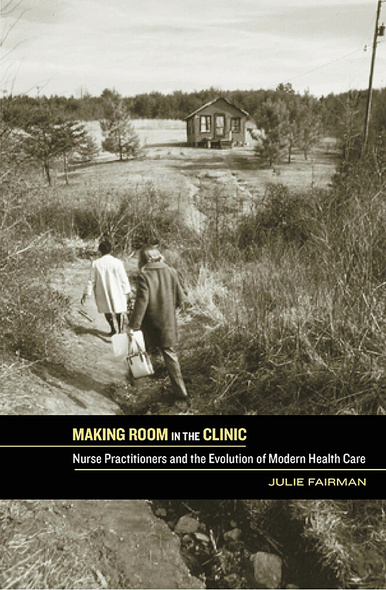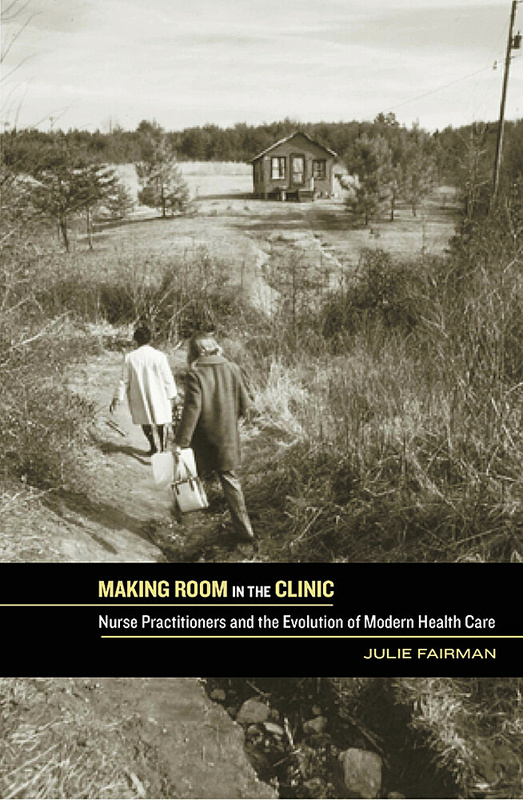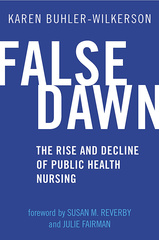Making Room in the Clinic
Nurse Practitioners and the Evolution of Modern Health Care
Rutgers University Press
In Making Room in the Clinic, Julie Fairman examines the context in which the nurse practitioner movement emerged, how large political and social movements influenced it, and how it contributed to the changing definition of medical care. Drawing on primary source material, including interviews with key figures in the movement, Fairman describes how this evolution helped create an influential foundation for health policies that emerged at the end of the twentieth century, including health maintenance organizations, a renewed interest in health awareness and disease prevention, and consumer-based services.
Fairman writes an impressive history of nurse practitioners--an eminently readable and scholarly critique of how nursing changed and adapted to society, politics and economics from the 1960s through the 1980s.
Fairman addresses critical issues that are relevant to the nursing and medical professions today and provides a much-needed history of the nurse practitioner movement.
Making Room in the Clinic provides a nuanced and sophisticated historical analysis of the rise of nurse practitioners, focusing on how a shift in proactice politics and clinical thinking was created. Fairman suggests ways why, for many of us, the best doctor in our future may indeed be a nurse. Given our current primary care crisis, this is a must read for anyone who cares about the present and future of American health care.
Julie Fairman's robust defense of nurse practitioners could not be more timely. As the US debates how to provide millions of uninsured Americans with health care the greatest challenge will be to determine how to provide services and make sure they are safe and of high quality. This detailed history highlights the complexities involved in responding to that challenge.
This is a well-researched, well-written, and scholarly work that highlights complex ways in which advanced practice nurses and physicians negotiated the boundaries of clinical care for vulnerable patients. Recommended.
'Making Room in the Clinic not only documents the development of a new type of health care worked but sets it clearly within the wider context of nursing and medicine in the 1960s and 1970s. Fairman's history of the nurse practitioner movement adds an important dimension to scholarship on health care in the post-World War II era.'
Fairman writes an impressive history of nurse practitioners--an eminently readable and scholarly critique of how nursing changed and adapted to society, politics and economics from the 1960s through the 1980s.
Fairman addresses critical issues that are relevant to the nursing and medical professions today and provides a much-needed history of the nurse practitioner movement.
Making Room in the Clinic provides a nuanced and sophisticated historical analysis of the rise of nurse practitioners, focusing on how a shift in proactice politics and clinical thinking was created. Fairman suggests ways why, for many of us, the best doctor in our future may indeed be a nurse. Given our current primary care crisis, this is a must read for anyone who cares about the present and future of American health care.
Julie Fairman's robust defense of nurse practitioners could not be more timely. As the US debates how to provide millions of uninsured Americans with health care the greatest challenge will be to determine how to provide services and make sure they are safe and of high quality. This detailed history highlights the complexities involved in responding to that challenge.
This is a well-researched, well-written, and scholarly work that highlights complex ways in which advanced practice nurses and physicians negotiated the boundaries of clinical care for vulnerable patients. Recommended.
'Making Room in the Clinic not only documents the development of a new type of health care worked but sets it clearly within the wider context of nursing and medicine in the 1960s and 1970s. Fairman's history of the nurse practitioner movement adds an important dimension to scholarship on health care in the post-World War II era.'
JULIE A. FAIRMAN, PhD, RN, FAAN, is the Nightingale Professor in honor of Nursing Veterans at the University of Pennsylvania School of Nursing and Chair of the Biobehavorial Health Sciences Department. Her research focuses on 20th century healthcare issues, in particular, the history of APRNs and health policy as it relates to competition, scope of practice, and service models. Her most recent work has moved into the intersection of the Civil Rights movement and health. She has published 4 books (2 as co-editor) and her work has been published in the NEJM, the Lancet, and Health Matrix. Dr. Fairman is the co-director of the RWJF Future of Nursing Scholars program and the Director Emerita of the Barbara Bates Center for the Study of the History of Nursing. She is an AAN Fellow and Philadelphia College of Physicians and Visiting Nurses Association of Philadelphia board member. Dr. Fairman served as the 2009 IOM/AAN/ANF Scholar in Residence and worked on the Future of Nursing report.
Acknowledgments
List of Abbreviations
Introduction
Chapter 1: "Oh the Opportunities, the Possibilities...!"
Chapter 2: Following the Money
Chapter 3: Psychology Girls and Clandestine Groups: Rethinking Specialization in Nursing
Chapter 4: Stealing the Spell Book
Chapter 5: The AMA and ANA under Siege
Chapter 6: Coming Together, Breaking Apart: The National Joint Practice Commission and the Politics of Practice
Chapter 7: Traingulating Specialty Practice: The ANA, NAPNAP, and the American Academy of Pediatrics
Chapter 8: Making Room in the Clinic
A Note on Archival Sources
Notes
Index
List of Abbreviations
Introduction
Chapter 1: "Oh the Opportunities, the Possibilities...!"
Chapter 2: Following the Money
Chapter 3: Psychology Girls and Clandestine Groups: Rethinking Specialization in Nursing
Chapter 4: Stealing the Spell Book
Chapter 5: The AMA and ANA under Siege
Chapter 6: Coming Together, Breaking Apart: The National Joint Practice Commission and the Politics of Practice
Chapter 7: Traingulating Specialty Practice: The ANA, NAPNAP, and the American Academy of Pediatrics
Chapter 8: Making Room in the Clinic
A Note on Archival Sources
Notes
Index








